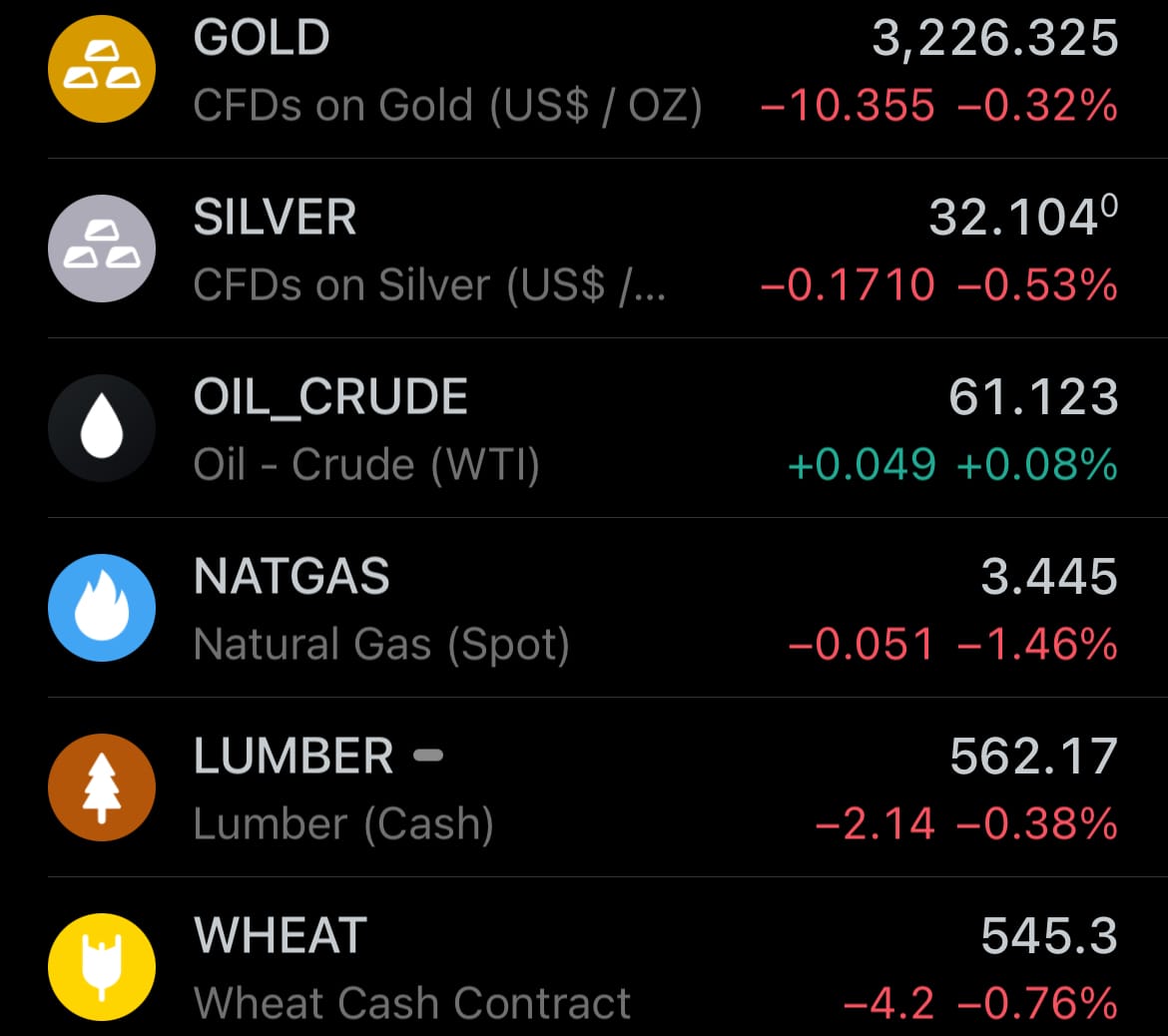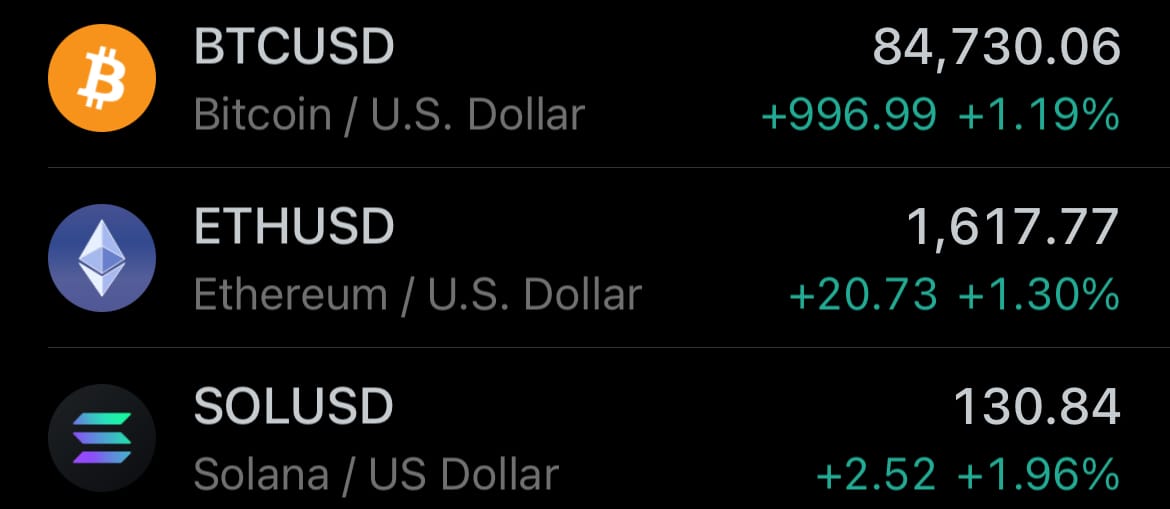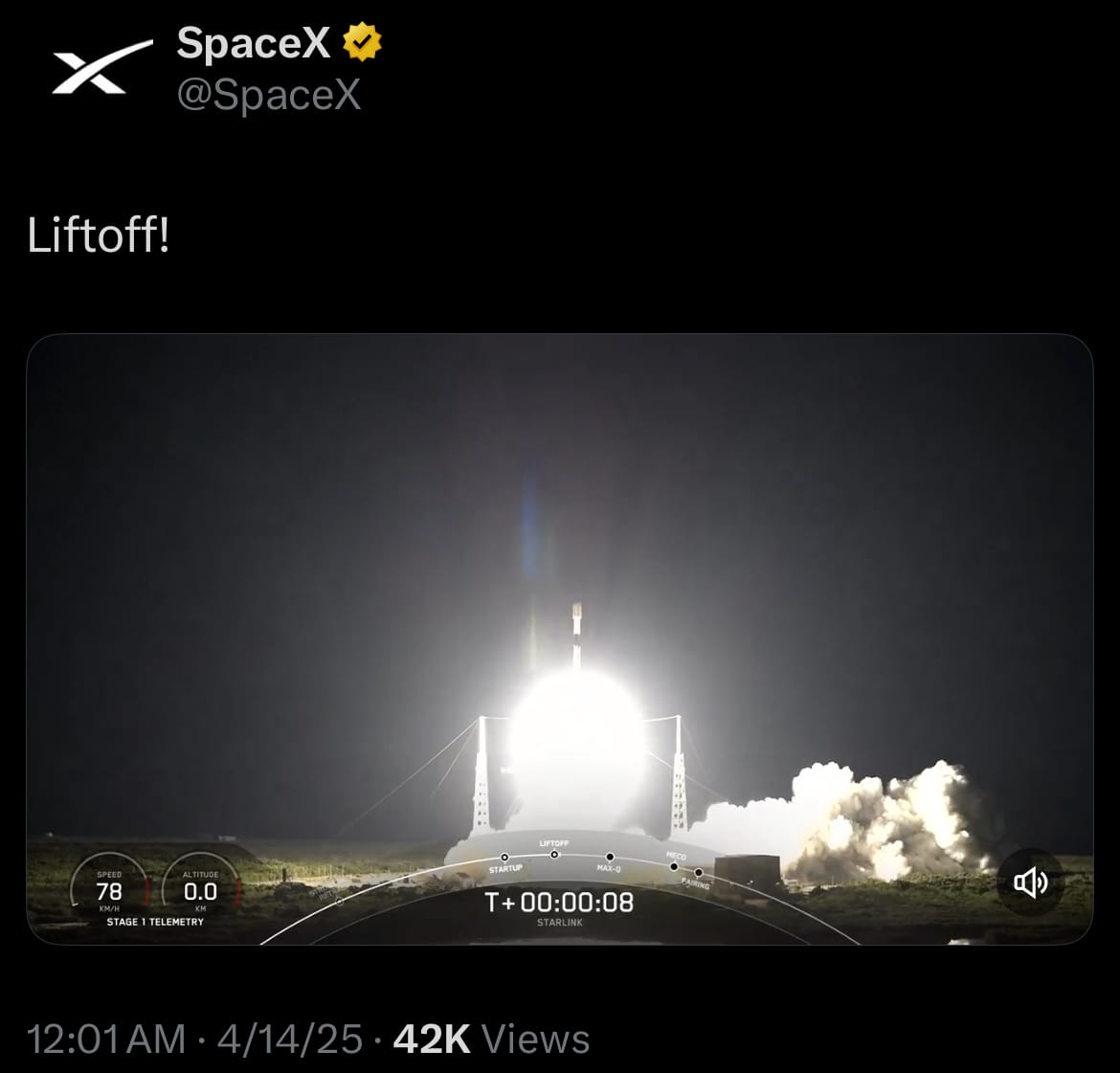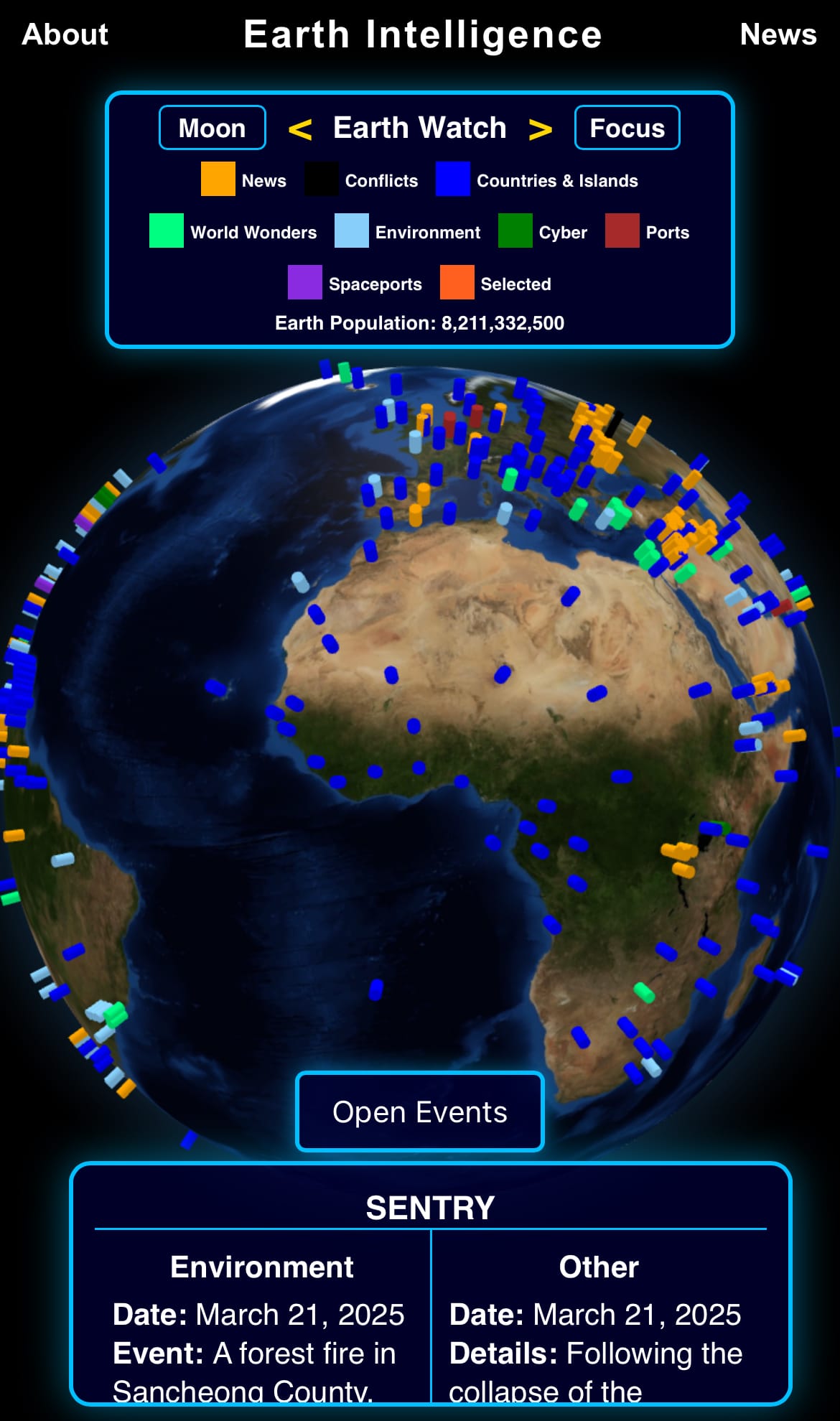Monday☕️

Trending:
- Over the past 48 hours, news about China limiting rare earth exports has spread widely, especially on X, though the policy began on April 4, 2025, after the U.S. raised tariffs on Chinese goods. China’s Ministry of Commerce and General Administration of Customs issued Announcement 18, requiring export licenses for rare earth elements like samarium, gadolinium, terbium, dysprosium, lutetium, scandium, yttrium, and rare earth magnets. This has slowed or stopped shipments at Chinese ports. These materials are key for electronics, electric vehicles, renewable energy, and defense, with China supplying about 90% of the world’s refined rare earths, per industry data.
- Rare earth elements are found all over the world, in places like Australia, the U.S., Canada, Brazil, and Greenland, but China leads because it has invested heavily in mining, refining, and processing, and benefits from large-scale operations. Mining involves digging up minerals like bastnäsite and monazite, then refining them through crushing and chemical processes to get pure elements, which is complex and costly. China mines about 60% of the world’s raw rare earths (around 240,000 metric tons in 2024) and refines over 85%, controlling roughly 90% of the $10-15 billion global market. Its edge comes from years of funding, advanced facilities like the Bayan Obo mine, and lower costs compared to other countries with smaller or less developed setups. For instance, the U.S. and Australia mine rare earths but often rely on China for refining. These elements are used in magnets for electric cars, wind turbines, smartphones, semiconductors, satellites, oil refining, and military tech like radar and missiles, making them vital globally.
Economics & Markets:
- Yesterday’s commodity market:

- Yesterday’s crypto market:

Geopolitics & Military Activity:
- Yesterday, April 13, 2025, Odesa, Ukraine, experienced a large-scale drone strike, resulting in at least four reported casualties and damage to civilian infrastructure, including vehicles and buildings. The attack disrupted daily life in the port city, with authorities assessing the full scope of the impact. Odesa’s strategic significance makes it a frequent target, and residents face ongoing challenges as they respond to the immediate consequences of such incidents.

- The strike is part of a broader pattern of reciprocal attacks targeting key infrastructure to disrupt operations and resources. Recent weeks have seen intensified aerial assaults, with Odesa and other Ukrainian cities facing drone and missile strikes, while counterattacks have hit energy and military sites elsewhere, causing economic and logistical strain. These exchanges have led to civilian losses and widespread damage, complicating efforts to stabilize the region. The cycle of strikes continues to challenge local communities and hinder progress toward de-escalation.
Environment & Weather:
- Yesterday, April 13, 2025, a cyclone with winds reaching 30 m/s (67 mph) struck Primorsky Krai, Russia, disrupting power to over 1,000 homes and affecting 9,000 residents. The storm damaged buildings, collapsed structures like sheds, and scattered debris across urban and coastal areas. Transportation and communication systems faced interruptions, and emergency teams are working to restore electricity and address immediate impacts. The risk of flooding and landslides remains a concern in certain low-lying and hilly areas, with recovery efforts underway.

- Primorsky Krai, situated along the Sea of Japan, experiences cyclonic storms regularly, particularly between summer and early autumn. These weather systems typically begin as tropical cyclones in the western Pacific, often near the Philippines or the South China Sea, before moving north and transitioning into extratropical cyclones as they near the region. The area’s climate, influenced by monsoon patterns and the Primorsky Current, contributes to frequent heavy rain and gusty winds, which can lead to power outages and infrastructure issues. Such storms are a recurring feature of the region’s weather, with past events like Typhoon Maysak in 2020 causing comparable disruption, making this cyclone notable but consistent with historical patterns.

Space:
- Today, April 14, 2025, at 12:00 AM EDT, SpaceX launched a Falcon 9 Block 5 rocket with 27 V2 Starlink satellites during the Starlink Group 6-73 mission from Space Launch Complex 40 at Cape Canaveral Space Force Station, Florida. The rocket’s first-stage booster, B1067, completed its 27th flight and landed on a droneship in the Atlantic Ocean.

- The satellites were deployed to join SpaceX’s Starlink constellation, which includes 7,500 satellites for internet connectivity. This launch is part of SpaceX’s series of missions in 2025 to build out its satellite network. The booster’s reuse reflects efforts to reduce costs through recyclable technology.
Statistic:
- Largest public railroad companies by market capitalization:
- 🇺🇸 Union Pacific Corporation: $131.00B
- 🇨🇦 Canadian Pacific Railway: $68.67B
- 🇨🇦 Canadian National Railway: $62.58B
- 🇺🇸 CSX Corporation: $52.79B
- 🇺🇸 Norfolk Southern: $49.38B
- 🇯🇵 East Japan Railway: $24.37B
- 🇯🇵 Central Japan Railway: $20.39B
- 🇮🇳 Indian Railway Finance: $18.82B
- 🇨🇳 China Railway Construction: $13.92B
- 🇯🇵 West Japan Railway: $9.90B
- 🇫🇷 Getlink: $9.59B
- 🇯🇵 Tokyo Metro: $7.91B
- 🇯🇵 Tokyu: $6.97B
- 🇮🇳 Indian Railway Catering & Tourism: $6.78B
- 🇯🇵 Hankyu Hanshin Holdings: $6.78B
- 🇧🇷 Rumo: $5.61B
- 🇹🇼 Taiwan High Speed Rail: $4.61B
- 🇦🇺 Qube Holdings: $4.27B
- 🇯🇵 Kintetsu GHD: $4.08B
- 🇯🇵 Kyushu Railway Company: $4.03B
- 🇯🇵 Odakyu Electric Railway: $3.71B
- 🇯🇵 Tobu Railway: $3.60B
- 🇦🇺 Aurizon Holdings: $3.38B
- 🇯🇵 Keio Corporation: $3.17B
- 🇹🇭 Bangkok Expressway and Metro (BEM): $2.48B
History:
- Railroad technology has its roots in the early 19th century, beginning with horse-drawn wagons on wooden or cast-iron rails, primarily used in mines. The revolutionary breakthrough came with the steam locomotive, with George Stephenson’s Rocket in 1829 often cited as a milestone that launched modern railway transport. Throughout the 19th century, railways expanded rapidly, enabling industrial economies to move goods and people at unprecedented speeds. Key advancements included the standardization of rail gauges, stronger steel rails, the adoption of air brakes, and signaling systems to prevent collisions. By the early 20th century, steam power began to give way to diesel and electric locomotives, which required less maintenance and could run faster and longer. The mid-to-late 20th century saw a global wave of electrification, especially in Europe and Asia, paired with computerized control systems, centralized traffic management, and intermodal container shipping, which streamlined freight logistics.
- Today, rail transport remains essential for both freight and passengers, with cutting-edge technologies pushing its capabilities even further. China leads the world with the most extensive and rapidly growing high-speed rail (HSR) network, exceeding 40,000 km of track and featuring trains like the Fuxing Hao that reach speeds of 350 km/h. The United States holds the largest total rail network, primarily used for freight, and boasts the most ton-miles of cargo moved by rail annually. Japan’s Shinkansen and France’s TGV set global benchmarks for high-speed rail innovation, emphasizing safety, and efficiency. Meanwhile, countries like Germany, Spain, and South Korea are also major players in modern rail development. Emerging technologies such as magnetic levitation (maglev) trains—already in use in Japan and China—offer frictionless, ultra-fast travel. Additionally, smart rail systems incorporating artificial intelligence for traffic control, predictive maintenance, and autonomous train operations are being piloted globally, marking the next leap in the evolution of railroad technology.
Image of the day:

Thanks for reading!
Earth is complicated, we make it simple.
Click image to view the Earth Intelligence System:



Support/Suggestions Email:
earthintelligence@earthintel.news




